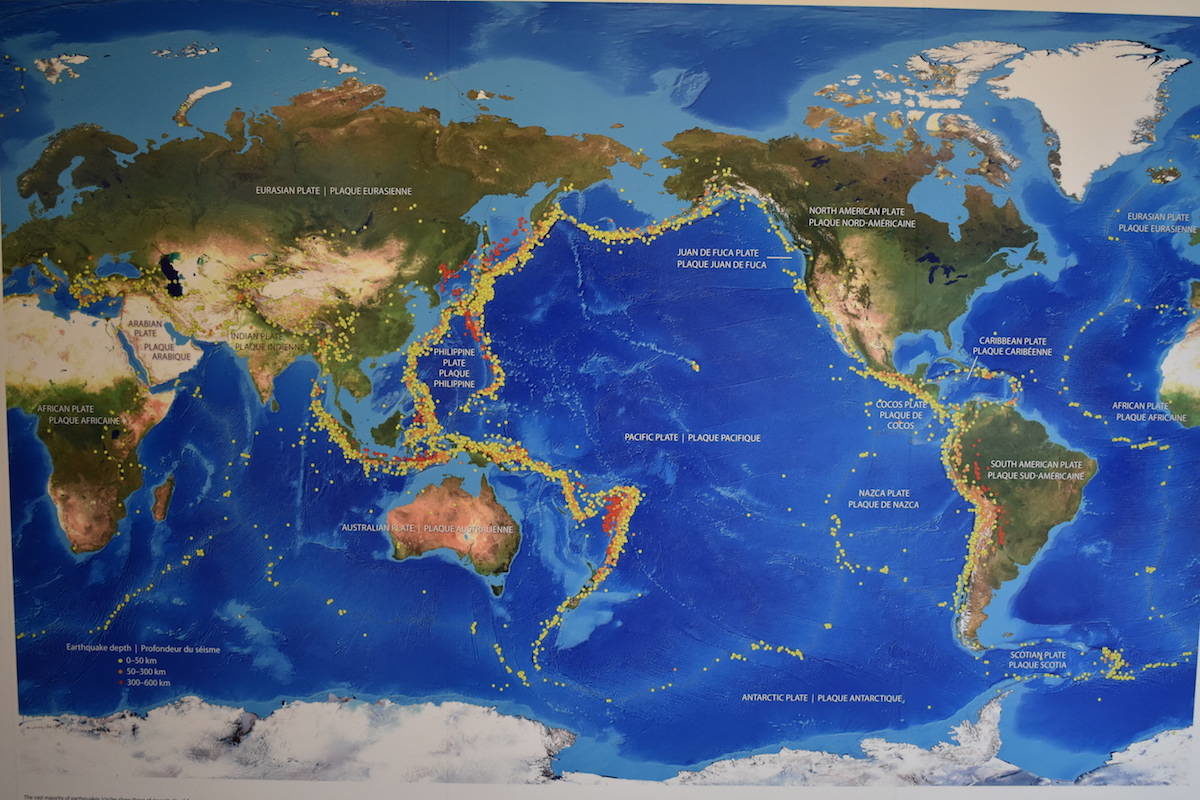
"In our part of the world, there are the big Pacific and North American [tectonic] plates, and caught in-between the two is the Juan de Fuca plate system," says Taimi Mulder, seismologist at the Geological Survey of Canada (GSC), which monitors all seismic activity in Western Canada.
Over millions of years, these plates push and grind under and past each other in areas called subduction zones. Earthquakes are caused and can be tiny or they can be massive, like the 2004 Sumatran earthquake, which ruptured 1,000 kilometres of coastline.
"An earthquake is like ringing a bell. The earthquake is the clapper that sets it off and the bell reverberates," said Mulder. "In an earthquake, energy is sent shooting in all directions and it pings around inside the earth making the whole earth vibrate."
Magnitude 4 or 5 earthquakes will likely wake you up, while a 7 will result in toppled bookcases and fallen chimneys. Thanks to B.C.'s stringent building code, structural collapse is not expected in magnitude 7s. Magnitude 8 or 9s have the same severity of shaking as a 7, but their duration lasts longer, often over 2 or 3 minutes. They cause structural building damage and ruptured gas lines, often causing fire.
The last big Vancouver Island earthquake struck Courtenay in 1946 and measured 7.3 on the Richter scale. The GSC says quakes of this magnitude should happen every decade, so the Island is about 70 years overdue.
As well as this imminent quake, Mulder says we have entered the timeframe to expect a magnitude 9 mega-thrust rupture earthquake too. These Cascadia Subduction Zone earthquakes happen every 200 to 800 years, and the last one occurred 300 years ago. If it hits magnitude 9, it will cause a tsunami, wreaking havoc on some coastal communities on the Island.
While storms often whip up 100 or 200 metres worth of surface water, tsunamis move the whole water column, several kilometres of water, at over 700 km per hour, close to the speed of a jetplane.
The GSC collaborates with the nearby Institute of Ocean Sciences (IOS), whose world-class programmers and super computers model tsunami effects.
"We have the ability to simulate different earthquake scenarios," says IOS acting manager of ocean sciences division Jon Chamberlain. "What type of wave it would likely generate, the likely maximum size of wave and how long it would take to reach certain parts of the coastline."
Mulder explains one such scenario, "The wave that will hit the west coast is likely to be about 10m high, wrapping around the Island and being 4 or 5m by the time it hits Victoria, 1 or 2m when it reaches Vancouver."
West coast residents will most likely receive hours of notice for tsunamis originating from across the Pacific, but only 15-45 minutes for those from the Cascadia Subduction Zone. There will be more time for people in Greater Victoria. Mulder advises that if a quake lasts longer than three minutes, it is likely magnitude 9 and a tsunami is incoming.



Reader Comments
to our Newsletter